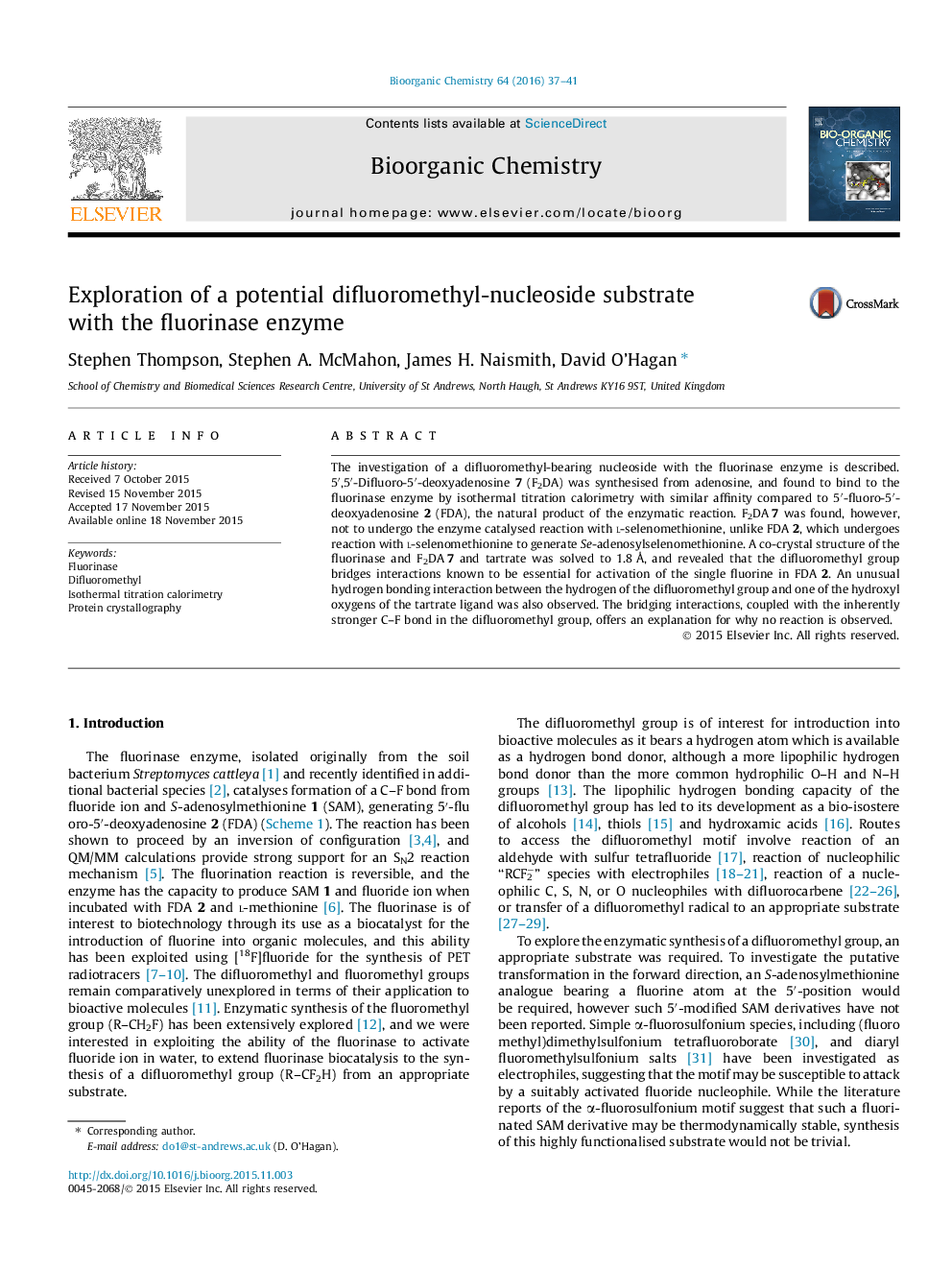| کد مقاله | کد نشریه | سال انتشار | مقاله انگلیسی | نسخه تمام متن |
|---|---|---|---|---|
| 1355584 | 1500450 | 2016 | 5 صفحه PDF | دانلود رایگان |

• The fluorinase is challenged with a difluoromethyl rather than a monofluoromethyl substrate.
• 5′,5′-Difluoro-5′-deoxyadenosine binds well to the fluorinase.
• A co-crystal of the fluorinase and 5′,5′-difluoro-5′-deoxyadenosine is reported.
• 5′,5′-Difluoro-5′-deoxyadenosine is not a substrate for the fluorinase enzyme.
The investigation of a difluoromethyl-bearing nucleoside with the fluorinase enzyme is described. 5′,5′-Difluoro-5′-deoxyadenosine 7 (F2DA) was synthesised from adenosine, and found to bind to the fluorinase enzyme by isothermal titration calorimetry with similar affinity compared to 5′-fluoro-5′-deoxyadenosine 2 (FDA), the natural product of the enzymatic reaction. F2DA 7 was found, however, not to undergo the enzyme catalysed reaction with l-selenomethionine, unlike FDA 2, which undergoes reaction with l-selenomethionine to generate Se-adenosylselenomethionine. A co-crystal structure of the fluorinase and F2DA 7 and tartrate was solved to 1.8 Å, and revealed that the difluoromethyl group bridges interactions known to be essential for activation of the single fluorine in FDA 2. An unusual hydrogen bonding interaction between the hydrogen of the difluoromethyl group and one of the hydroxyl oxygens of the tartrate ligand was also observed. The bridging interactions, coupled with the inherently stronger C–F bond in the difluoromethyl group, offers an explanation for why no reaction is observed.
Figure optionsDownload as PowerPoint slide
Journal: Bioorganic Chemistry - Volume 64, February 2016, Pages 37–41